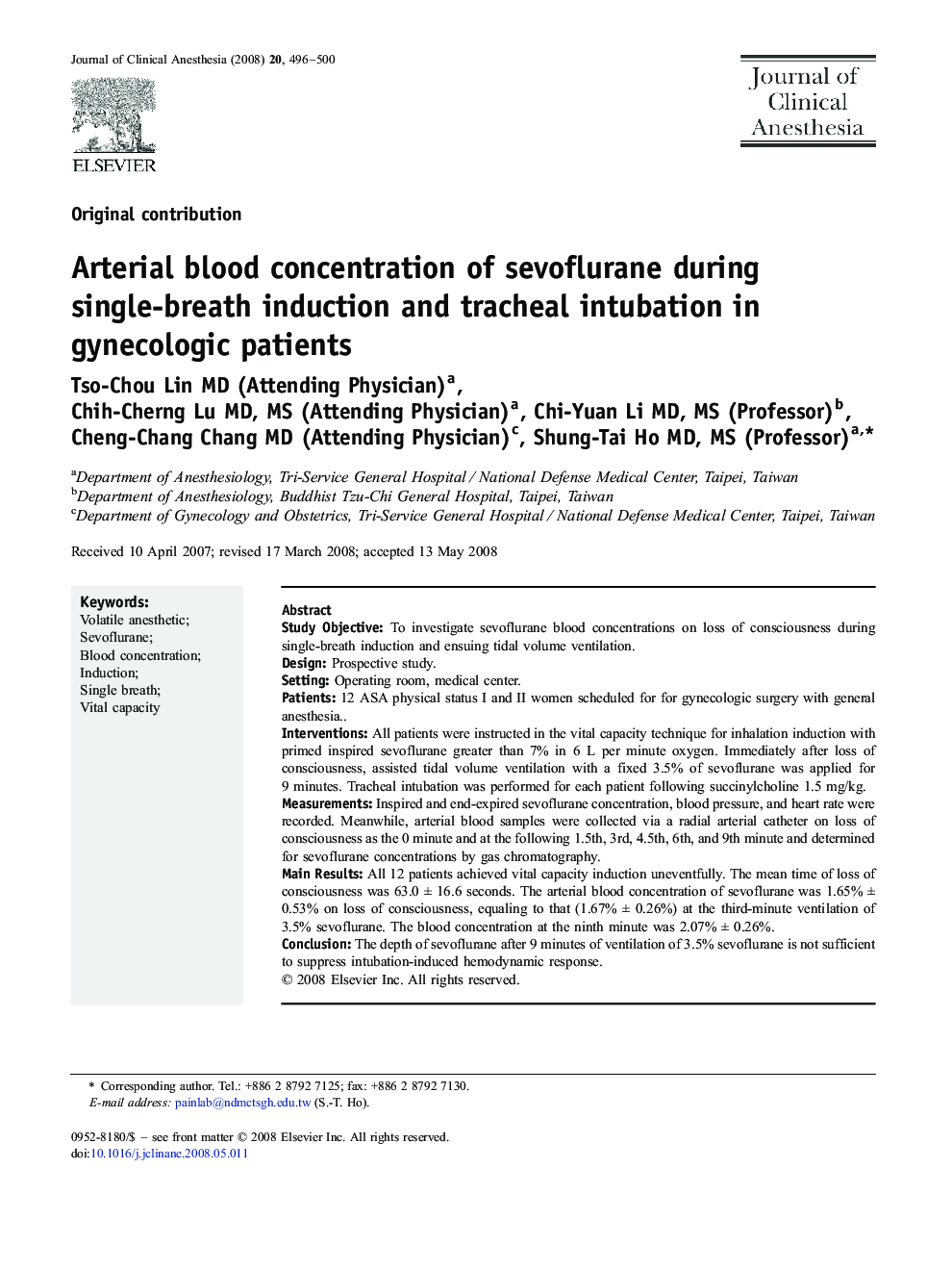| Article ID | Journal | Published Year | Pages | File Type |
|---|---|---|---|---|
| 2763657 | Journal of Clinical Anesthesia | 2008 | 5 Pages |
Study ObjectiveTo investigate sevoflurane blood concentrations on loss of consciousness during single-breath induction and ensuing tidal volume ventilation.DesignProspective study.SettingOperating room, medical center.Patients12 ASA physical status I and II women scheduled for for gynecologic surgery with general anesthesia..InterventionsAll patients were instructed in the vital capacity technique for inhalation induction with primed inspired sevoflurane greater than 7% in 6 L per minute oxygen. Immediately after loss of consciousness, assisted tidal volume ventilation with a fixed 3.5% of sevoflurane was applied for 9 minutes. Tracheal intubation was performed for each patient following succinylcholine 1.5 mg/kg.MeasurementsInspired and end-expired sevoflurane concentration, blood pressure, and heart rate were recorded. Meanwhile, arterial blood samples were collected via a radial arterial catheter on loss of consciousness as the 0 minute and at the following 1.5th, 3rd, 4.5th, 6th, and 9th minute and determined for sevoflurane concentrations by gas chromatography.Main ResultsAll 12 patients achieved vital capacity induction uneventfully. The mean time of loss of consciousness was 63.0 ± 16.6 seconds. The arterial blood concentration of sevoflurane was 1.65% ± 0.53% on loss of consciousness, equaling to that (1.67% ± 0.26%) at the third-minute ventilation of 3.5% sevoflurane. The blood concentration at the ninth minute was 2.07% ± 0.26%.ConclusionThe depth of sevoflurane after 9 minutes of ventilation of 3.5% sevoflurane is not sufficient to suppress intubation-induced hemodynamic response.
